Photos: Preview of Theodore Payne garden tour this weekend
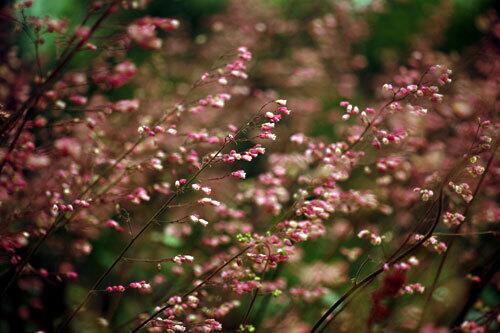
We all know that gardens designed with
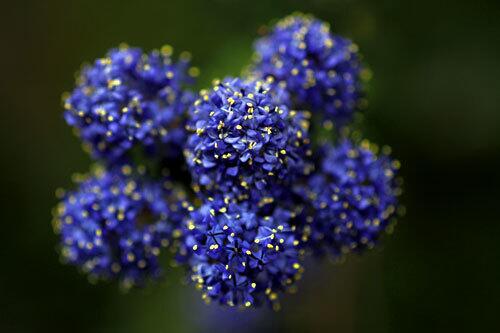
The sheer beauty of Wilson’s Altadena home will have you wondering, why doesn’t everyone garden with natives? Granted, the backdrop of Angeles National Forest is part of the effect. Gardens come big in this slice of foothill country -- in Wilson’s case, with a stand of five-centuries-old cedars. Yet while previewing gardens on the Payne tour, I found that the look of Wilson’s place stems from her ability to tie her woodsy, casually domestic foreground into the wild grandeur of the background. She is an artist and professional photographer who taught at the Art Center College of Design in
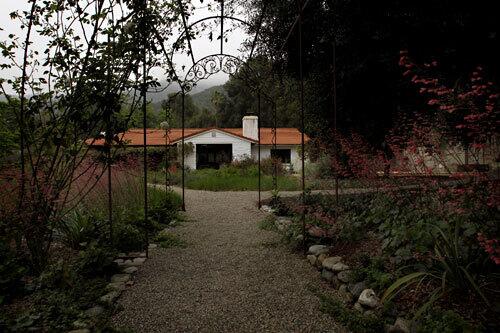
Wilson explained the choice to use mass plantings of coral bells and lilacs this way: “It’s like music; as you go through something, you need to be carried off to another point.” Coral bells are used to such dramatic effect that it’s worth going on the tour to learn this plant alone. Starting with 200 nursery plugs, Wilson kept dividing them in the autumn to the point that she had an estimated 3,000 making floaty magic. As fetchingly as their pink flowers waft in spring and summer breezes, Wilson also praises the leaves, which can withstand Altadena summers with watering only every two weeks. “They’re the most incredible little plants,” she said. “They’ve been pelted by hail, frozen and they keep coming and coming.” (Francine Orr / Los Angeles Times)
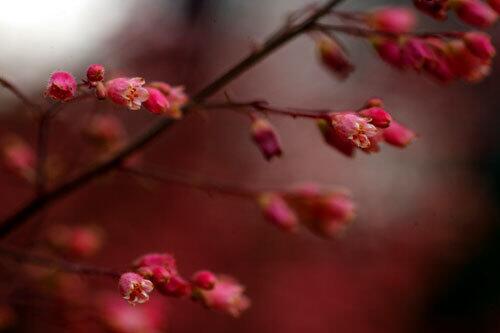
Detail of the coral bells, a Huechera hybrid called Wendy. (Francine Orr / Los Angeles Times)
Advertisement
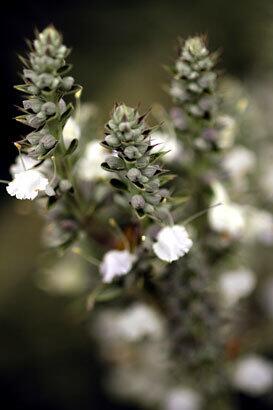
Salvia apiana, or white sage (Francine Orr / Los Angeles Times)
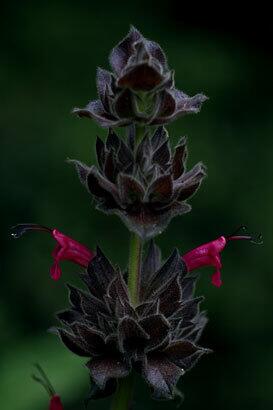
Salvia spathacea, or hummingbird sage. (Francine Orr / Los Angeles Times)
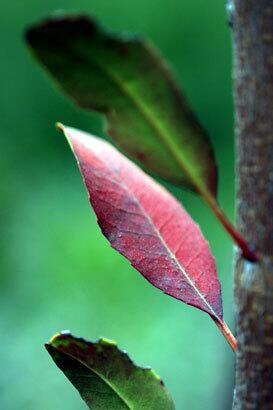
The textural beauty of a toyon leaf in Wilson’s garden. (Francine Orr / Los Angeles Times)
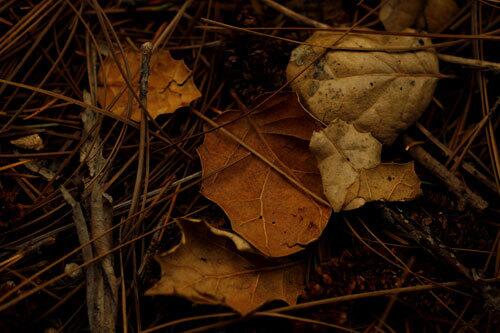
Even past their prime, they’re beautiful: pine needles and fallen oak leaves. (Francine Orr / Los Angeles Times)
Advertisement
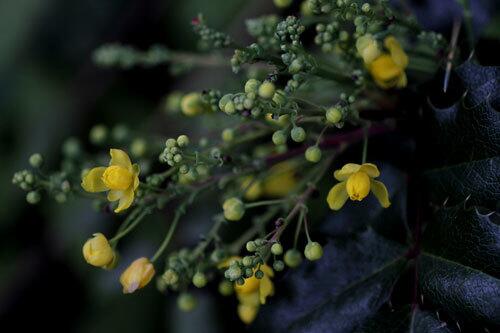
A type of Mahonia aquifolium, or
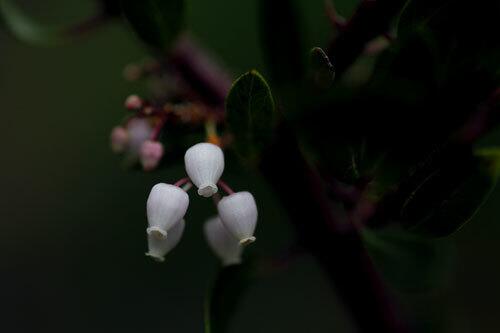
A native garden classic: the white flowers of manzanita, in this case, a variety called Howard McMinn. (Francine Orr / Los Angeles Times)
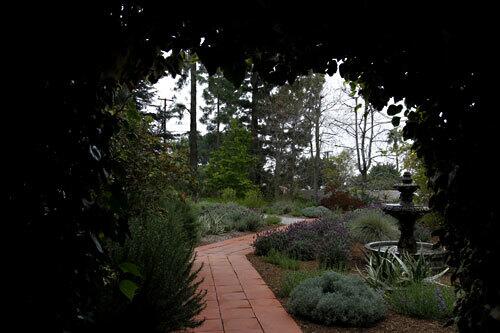
The natural beauty of Wilson’s Altadena landscape. (Francine Orr / Los Angeles Times)
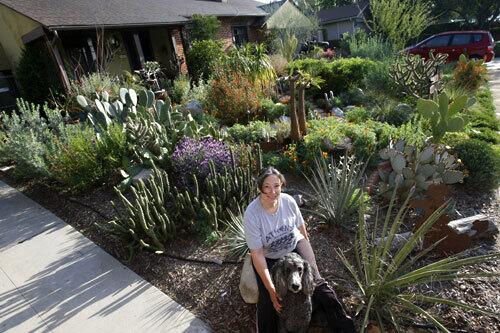
... this. Garcia, an illustrator, joined the Theodore Payne tour one year and took a design class immediately afterward. “I drew out the scale of the yard and put in the paths, the trees, the things I knew were going to go, then I just did bubble drawings of the rest,” she says. Among the native plants that Garcia wanted were white sage and manzanita. Yet while plucking these elements native to a chaparral landscape, Garcia’s overriding vision was a highly personalized desert. She wanted a palo verde tree and lots of cactus. There would also be art: Mexican art, pottery and an ever-mounting collection of poodle art. (Anne Cusack / Los Angeles Times)
Advertisement
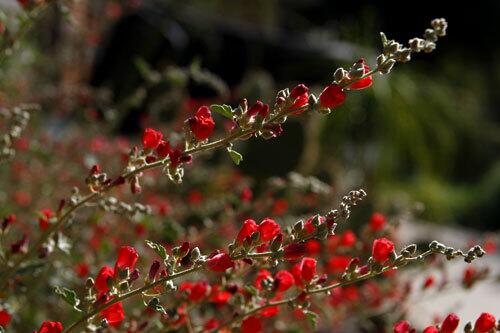
Sphaeralcea ambigua, or desert mallow. (Anne Cusack / Los Angeles Times)
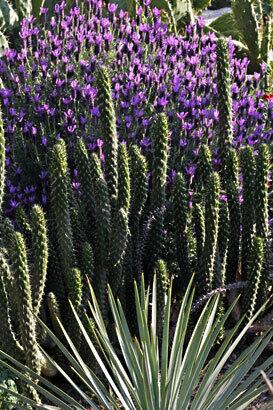
Garcia’s mix is eclectic: Non-native lavender stands with cactus and yucca. (Anne Cusack / Los Angeles Times)
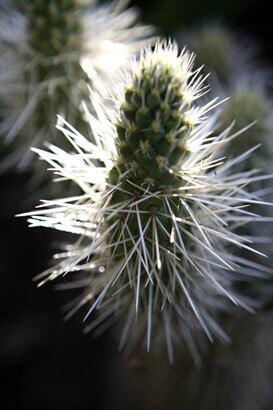
Opuntia bigelovii, or teddy bear cactus. (Anne Cusack / Los Angeles Times)
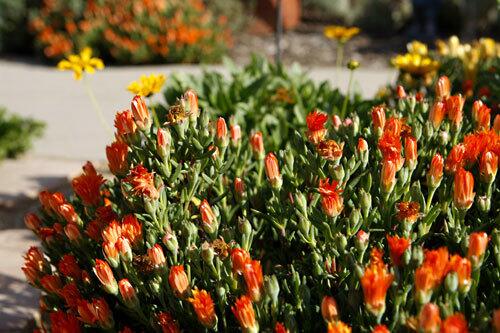
Nonnative iceplant adds color but requires relatively little water. (Anne Cusack / Los Angeles Times)
Advertisement
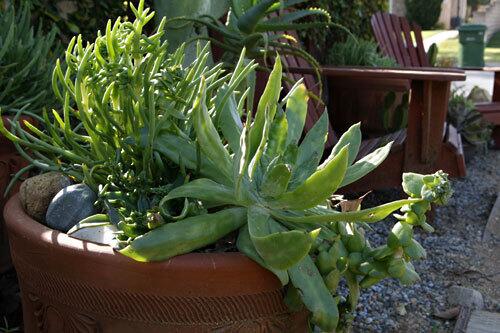
Potted arrangements complete the scene. (Anne Cusack / Los Angeles Times)
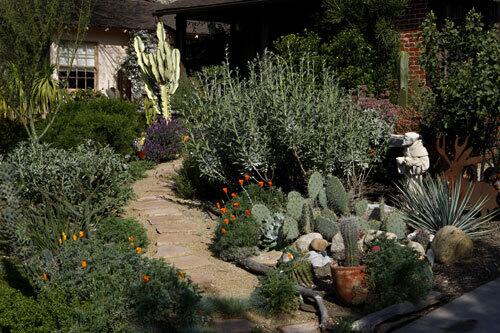
... the path looks like this. The plant combinations celebrate the stoic beauty of the Southwest, and artwork tucked here and there makes the landscape highly personal. (Anne Cusack / Los Angeles Times)
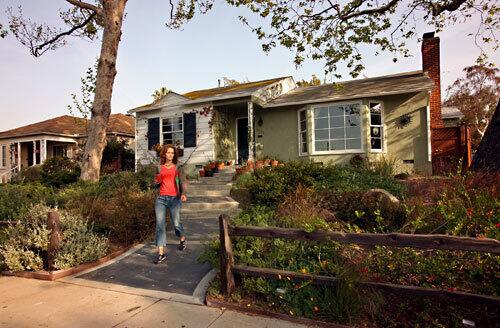
Mature sycamores attracted Tracey Robinson, pictured here, and Craig Peterson to the Westchester home that they bought in 1999. The couple (he’s a dentist, she works in television) bought Bob Perry’s book “Landscape Plants for Western Regions” to see what might work under the trees. Shade and roots limited their choices. After poring over plant combinations suggested by Perry, they began making trips to the Theodore Payne Foundation, then to three regional nurseries: Tree of Life in San Juan Capistrano, Matilija in Moorpark and Las Pilitas in Santa Margarita. The couple met manzanitas, coffeeberries, fluttering grasses and gooseberries in person, and the result was a tousled and loosely planted woodland garden with sun-lovers around the edges and poppies spilling over the perimeter through a rustic wooden fence. (Al Seib / Los Angeles Times)
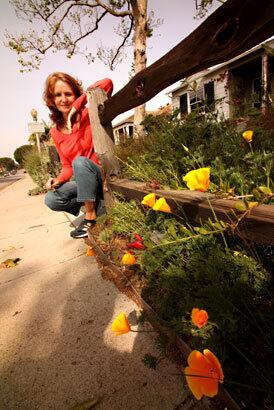
Robinson with
Advertisement
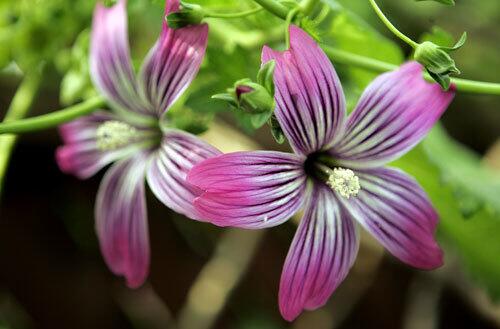
A tree mallow called Purisima thrives in morning shade. (Al Seib / Los Angeles Times)
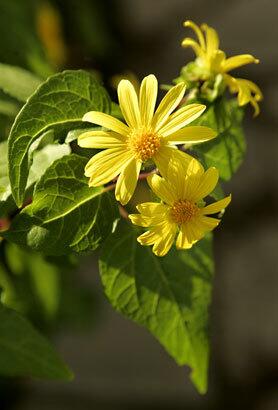
Canyon sunflower. (Al Seib / Los Angeles Times)
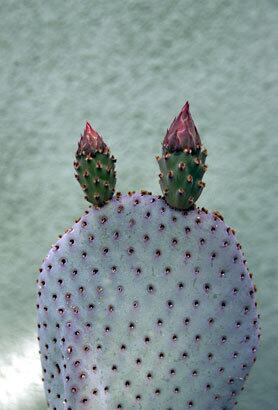
Beavertail cactus. (Al Seib / Los Angeles Times)
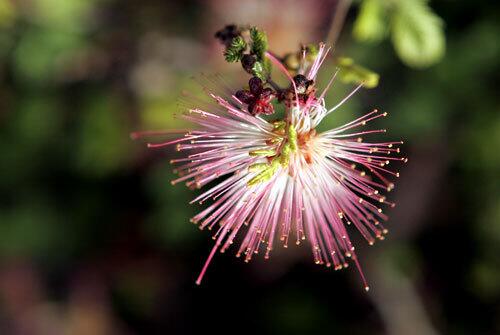
Robinson and Peterson grow several types of fairy duster. (Al Seib / Los Angeles Times)
Advertisement
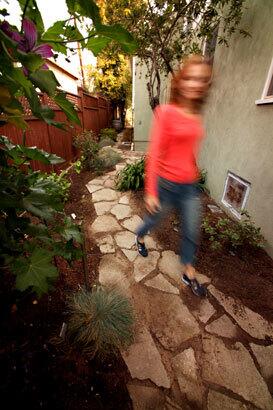
“When the weekend comes, I don’t want to go with everyone else to the beach,” Peterson says. “I want to stay home and work in the yard.” Here, Robinson walks across a path made of broken up concrete -- more permeable than patio, reducing runoff flowing into the ocean. (Al Seib / Los Angeles Times)
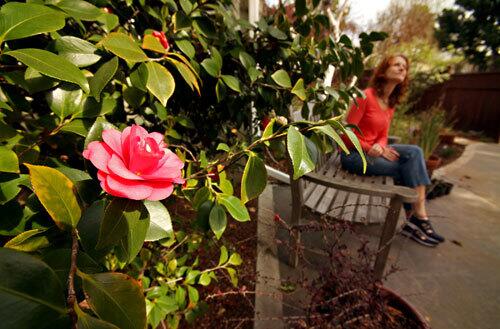
Camellias are part of the shade-loving palette. (Al Seib / Los Angeles Times)
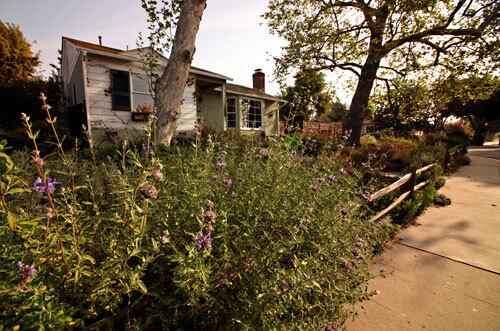
The garden is naturalistic, beautiful and open for touring: More than 50 gardens planted with
For more California gardening news and advice, join our



